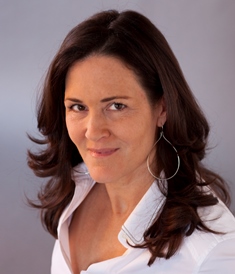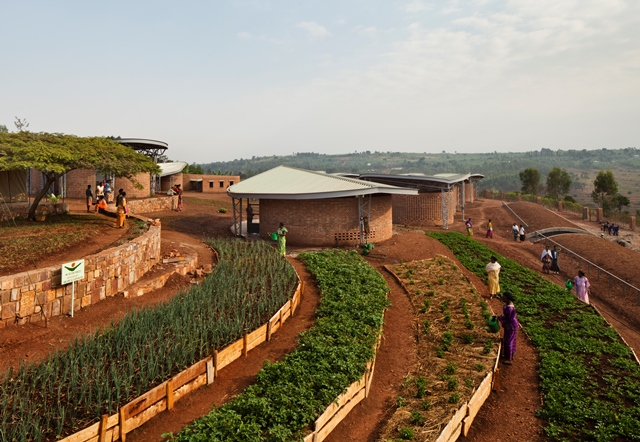Sharon Davis ’82, P’12 focuses on public interest design
By Jane Gordon Julien P’09

Photo by Elena Seibert
Sharon Davis ’82, P’12 went from Wall Street to Rwanda via a complete career turnaround, but what was important to the women of the little village of Kayonza was that she came at all.
Davis had been working on Wall Street since soon after she graduated from Trinity in 1982 with a B.A. in studio arts. But after her fourth child was born, she took time off to be home, and the lure of the markets vanished for her. She wasn’t sure what was next.
With a little guidance and a personality test that pointed her in the direction of architecture, she applied and was accepted into the Columbia University Graduate School of Architecture. She was 42. She had said back then, with a small measure of disbelief and frustration, to the career counselor she had hired to help her figure out her work life, “I’ll be 45 before I finish,” to which the career counselor replied, “You’ll be 45 anyway.” She got the message, and it was from that new beginning that her life changed, in ways that she never could have imagined.
First, she opened Sharon Davis Design. Then one day, a woman walked into her office and told Davis that her nonprofit, Women for Women International, based in Washington, D.C., needed a female architect. The project: a women’s center in Kayonza, Rwanda, that would help female survivors of the war start businesses to provide for their families.
Davis didn’t have to think long. “It was my first project, and I was very up front with the group on that,” she said. Even though she wouldn’t make a nickel from the work, she signed on.
Three and a half years later, the Women’s Opportunity Center opened on five acres in Kayonza. A rural paradise of gardens, leaf-shaped roofs, and rounded, open-brick buildings that, when lit, shimmer like fireflies at night, it boasts 450,000 bricks that the Kayonzan women crafted carefully by hand, from clay dug at the site. The brickmaking was yet another opportunity to learn a new skill, an exercise that takes place daily at the center.

Photo by Elizabeth Felicella
The complex is remarkable in a number of ways. The roofs collect rainwater, saving the women hours of toting it from distant–and often dirty–sources. Solar-powered filtration systems purify the water, which is stored for cooking and consumption. Composting toilets create fertilizer for the fields and gardens. Classrooms provide space for learning, and a working farm is training the women to grow produce, which they sell at an on-site marketplace.
Serene, sincere, and determined, Davis has spent a lifetime helping–someone somewhere somehow. She has served on the board of The Fresh Air Fund and was so involved she eventually adopted her third child through the organization. She has worked with the Natural Resources Defense Council, New York’s clean-water advocacy group Riverkeeper, and numerous other boards and organizations that support the disadvantaged and the environment.
Principal and owner of Sharon Davis Design on Perry Street in Manhattan, she works each day in a fourth-floor walk-up that is an architect’s dream. Large panes of glass overlook the old-brick charm of the West Village; bookcases are filled with scale models of present and past projects, sculptures, architecture books, and an unlikely copy of The One-Minute Manager; and long tables hold plans and concepts for future projects.
It is a far cry from the traumatized country of Rwanda, from the careworn faces of the Rwandan women she faced when she first arrived almost four years ago, in the poorest region of an impossibly impoverished country.
“I understood why I was passionate about the project much more when I saw it actually finished,” she said. “It was really, really satisfying … satisfying to be able give something of myself to these women. It was very personal and kind of addictive.”
Highly addictive, evidently. She is now devoting 75 percent of her time to what is termed “public interest design.” After the Rwandan project, she started the Big Future Group with the project’s hydrologist and landscape architect, committing to finding funding and completing more projects like the Women’s Opportunity Center.
She is working on a hospital project in rural Nepal and has started a project of her own, restoring a church in Kigali, Rwanda, where thousands were killed in a massacre after being told they would find refuge there. The interior has not been dismantled; within are human remains, clothing, shoes, identity cards, and the conjured images of that brutal day when so many lost their lives. “I think it’s critical to genocide prevention,” she said. “We have to make sure there are ways that people outside of the country remember what happened and that the generation growing up remembers, too.”